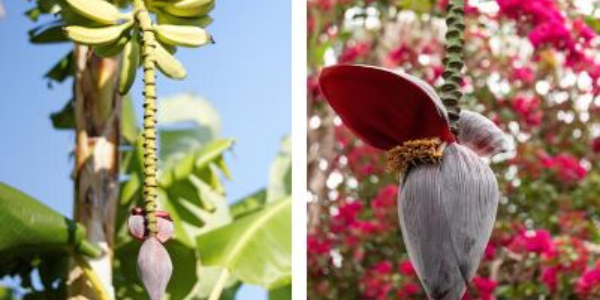You could probably be wondering whether bananas have seeds or not. Yes, bananas indeed have seeds. However, most commercially grown bananas are perceived to be seedless.
The truth is that commercially grown bananas have immature seeds that cannot allow propagation, since immature seeds cannot germinate. They can only be propagated through suckers and mature rhizomes.
Most bananas in retail shops and supermarkets are of Cavendish variety that is sweet and seedless.
Wild bananas have mature seeds. Wild bananas are propagated through the seeds that they produce. They are almost inedible because of the hard seeds they contain. The seeds are less than one centimeter in length.
What do banana seeds look like
Commercial banana seeds are little black spots found at the center of the fruit. The seeds are incapable to develop and mature. On the other hand, wild bananas have small rounded black seeds that dominate the larger portion of the fruit.
The two common wild banana species that have seeds are Musa acuminata and Musa balbishiana. These two species can germinate on seeds. Other species have been produced from them through genetic manipulation.
Structure of banana seed
A Banana seed is formed after fertilization of mature pollen grains with the ovule. This process is only viable in wild bananas that reproduce through natural means.
Musa balbishiana has an intensely hardcover with an only opening sealed by a shortened conical micropylar plug, known as an operculum. The seed is made of a fleshy tough but cracked outer layer and a skinny inner layer on the innermost surface which is a thick cuticle.
The seed is double-chambered; one large chamber and one small chamber. The larger chamber contains an embryo and an endosperm. The smaller chamber contains chalazal mass. The chambers are set apart by the inner integument and cuticle. There is a small parenchymatic tissue around the chambers.
At the end of the micropylar opening, the inner integument enters the micropylar canal, forming a casing for the larger chamber.
In Musa acuminata, the larger chamber makes up 50% of the total seed volume. The remaining volume is made of a micropylar plug and other outer integument material.
The seed structure of wild bananas remains the same even if the color, size, and shape of the fruit differ. Fresh fruit is between 31%-46% of water while dried fruit has a water content of below 10%.
Water enters the banana seeds through water gasps found around a micropylar plug or in the surrounding chalazal mass, where the other integuments are discontinuous and parenchymatic tissues separate the outer and inner chambers.
The porous integuments of banana seeds imply that the seed can absorb water. The embryo and the endoplasm may not absorb water due to impermeable inner integument and non-functional water gaps.
Banana seed dormancy
Banana seed dormancy differs with the species of banana. Studies indicate that Musa balbishiana is not dormant because it is easy to culture embryos excised from fresh seeds. Studies show that 90% of embryos excised from Musa balbishiana usually germinate. On the other hand, 68%-75% of embryos excised from Musa acuminata developed into plantlets.
In another study done using seeds of fruits from openly pollinated wild bananas and inter-specific crosses, dried seeds of Musa acuminate, and crosses between Eat African highland banana cultivars and Calcutta, the success rate of embryo culture was below 50%.
All these findings prove that dormancy plays a key role in preventing embryonic growth in both edible and wild bananas.

